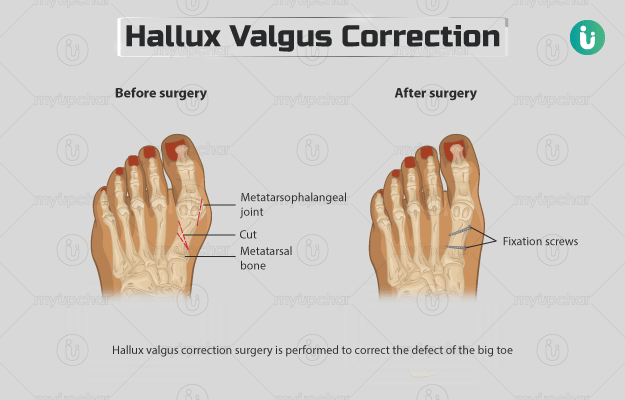Summary
Hallux valgus correction surgery is performed to correct the defect of the big toe and provide pain relief in individuals with bunions. A bunion is a deformity wherein the big toe is bent sideways towards the smaller toes, resulting in a bony lump on the side of the feet. Surgery is recommended when the condition becomes painful, and simple treatments do not provide any relief. The surgery may be done under local or general anaesthesia and involves the removal of the bony lump, straightening the affected big toe, and fixing it in the new position with screws and plates. The procedure lasts for about 60 minutes, and you will probably be discharged on the same day.










































